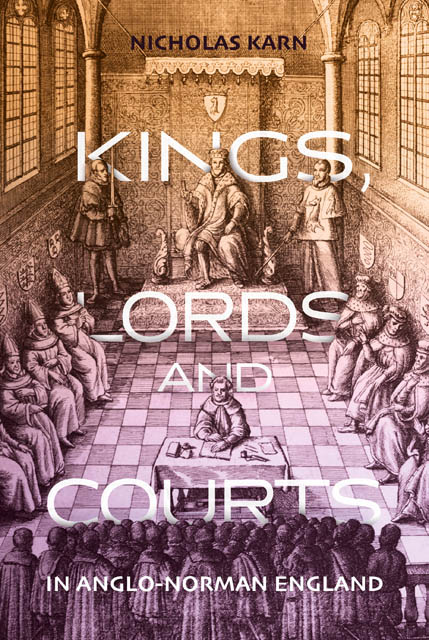Book contents
- Frontmatter
- Dedication
- Contents
- Preface and Acknowledgements
- List of Abbreviations
- Introduction
- 1 Lords and their Dependents in Court: The Later Anglo-Saxon Paradigm
- 2 The Aspirations of Lords in Eleventh- and Twelfth-Century England
- 3 Private Claims and Hundreds in the Later Eleventh and Earlier Twelfth Centuries
- 4 The Division of Hundreds and the Proliferation of Courts
- 5 From Debate within Courts to Debate between Courts: The Origins of Jurisdictional Debate
- 6 Courts, Pleas and Kings in the Early Twelfth Century
- 7 Pleas and Justices in the Early Twelfth Century
- Conclusion
- Appendix: The Evidence for Justices, 1100–54
- Bibliography
- Index
Introduction
Published online by Cambridge University Press: 18 January 2023
- Frontmatter
- Dedication
- Contents
- Preface and Acknowledgements
- List of Abbreviations
- Introduction
- 1 Lords and their Dependents in Court: The Later Anglo-Saxon Paradigm
- 2 The Aspirations of Lords in Eleventh- and Twelfth-Century England
- 3 Private Claims and Hundreds in the Later Eleventh and Earlier Twelfth Centuries
- 4 The Division of Hundreds and the Proliferation of Courts
- 5 From Debate within Courts to Debate between Courts: The Origins of Jurisdictional Debate
- 6 Courts, Pleas and Kings in the Early Twelfth Century
- 7 Pleas and Justices in the Early Twelfth Century
- Conclusion
- Appendix: The Evidence for Justices, 1100–54
- Bibliography
- Index
Summary
Before 1066, there were shires and there were hundreds; they were arenas where disputes were settled and where business was transacted. Edgar instructed that everyone should do justice to others in the hundred. This relatively simple pattern did not long survive the Conquest, and there is widespread historiographical consensus that there arose new kinds of court, which embodied and protected the powers and claims that lords demanded from their dependents. The pattern that emerges from the sources is that throughout the eleventh century lords created mechanisms for inserting their influence into assemblies and courts in various ways. There was no single method here; some tried to redraw boundaries so that courts consisted solely of their own dependents upon whom influence might be brought to bear, while others inserted their agents into courts so that they could have a strong influence upon them. Later, lords created units under the hundred, which mostly consisted of their own dependents and not those of other lords. Great churches acting as lords seem often to have been most active in doing this. These kinds of tactics straddle the Conquest, though most examples are first clearly evidenced after 1066. It would seem that something fundamental about lordship is being expressed through these tactics.
Where lords tried any of these methods for enhancing their influence in hundreds, there was generally a strong link to their own dependents, or sometimes to those who they thought should be their own dependents. This indicates that where lordly influence was strengthened in existing assemblies, or where new courts were set up as subdivisions of older assemblies, these developments were really about shaping the relationship between lords and their dependents, rather than mere acquisitiveness. The relationship between lords and their dependents assumed that lords would be in a position to control and discipline their dependents; this was fundamental to the better-documented lords’ courts from the later twelfth century. So far as can be seen, much of this business was done in the hundred before the Norman Conquest, for this was a prime location where lords could manage their dependents, but also a place where those dependents were visible and accessible to the claims of other lords and even the representatives of kings such as sheriffs. Dependents could be exploited by others or even lured away if visible and accessible in these circumstances.
- Type
- Chapter
- Information
- Kings, Lords and Courts in Anglo-Norman England , pp. 1 - 27Publisher: Boydell & BrewerPrint publication year: 2020



